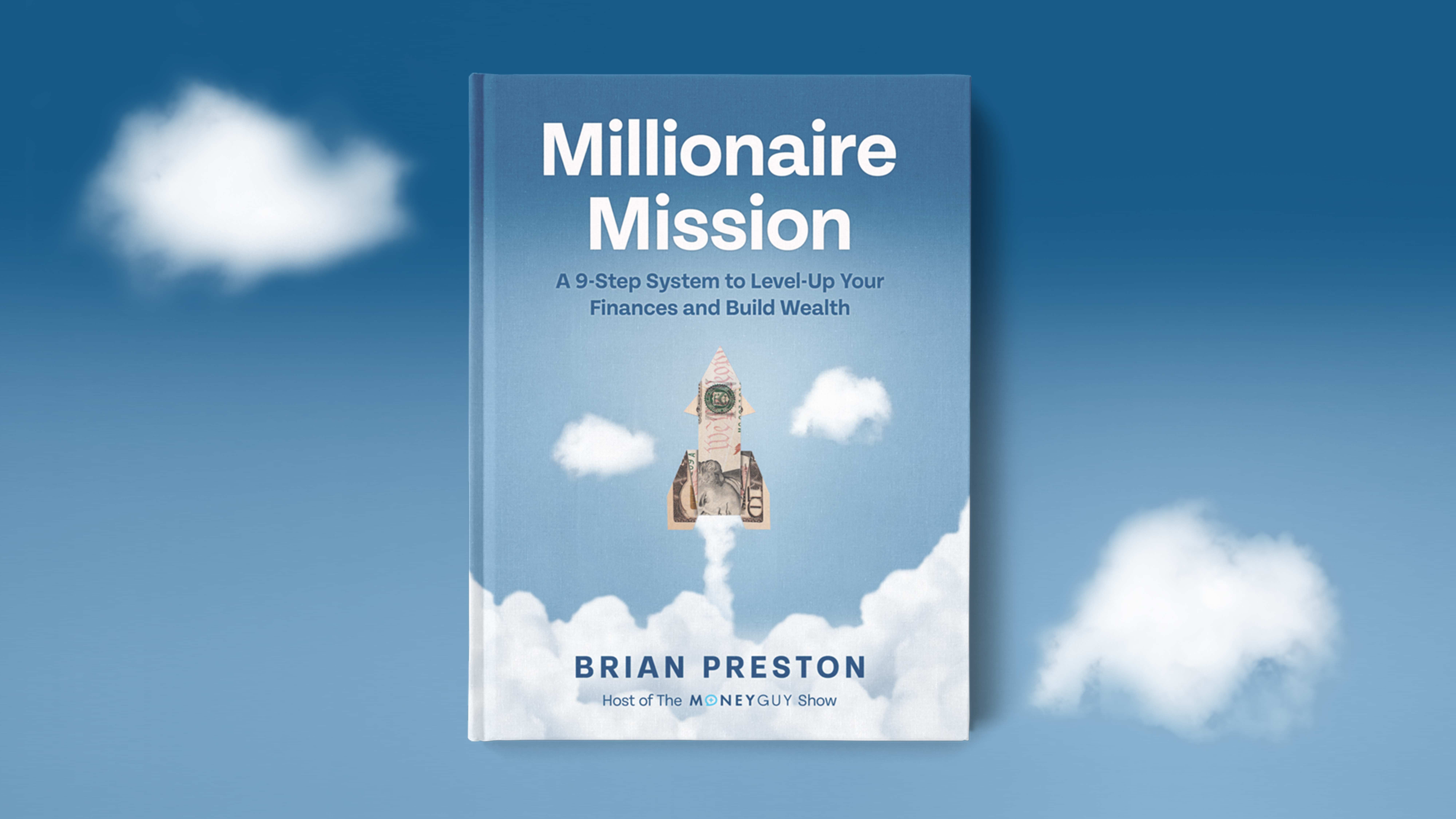
Change your life by
managing your money better.
Subscribe to our free weekly newsletter by entering your email address below.

Subscribe to our free weekly newsletter by entering your email address below.
You’ve probably heard of revenge spending, a money trend that took off in the years following the pandemic. But now there’s a new money trend taking Gen Z and millennials by storm—and we kind of love it.
We’re excited to dive into:
What this new trend is
What we like about it
Where we see room for improvement
In case you haven’t heard, revenge spending is a phenomenon where consumers rush to spend more than they normally would, often after being deprived of something during an economic downturn. This type of spending tends to focus on short-term satisfaction.
A clear example followed the COVID-19 lockdowns:
Many had travel, events, and purchases delayed or canceled.
After shutdowns, consumer behavior rebounded strongly.
Tiffany & Co. sales surged 30% in April 2020 and 90% in May 2020 compared to the prior year.
Burberry saw similar spikes in luxury goods sales.
Revenge saving is the opposite pivot: an increase in personal savings rates driven by economic uncertainty, layoffs, and inflation.
Key stats:
71% of Americans revised their savings behavior in 2025.
45% actively boosted their savings.
We love this trend—and it’s showing up in creative ways:
Dedicated low-spend months: Cutting subscriptions, dining out less.
Increased interest in high-yield savings accounts (around 4% APY, FDIC insured).
Automated savings strategies:
Incremental 1% increases every few months.
Direct deposit splits to funnel income directly into savings.
Sinking funds: Saving for short-term goals (vacations, home repairs, holidays) in designated accounts.
Learn more about sinking funds and automation
In one word: uncertainty.
People are feeling squeezed by:
Sticky inflation
High interest rates
Layoffs
As a result, cash feels like a safe haven. It’s not just for emergencies—it’s about peace of mind and financial freedom.
For Gen Z and millennials, cash represents:
Empowerment
The ability to switch careers
Relocating or starting a business—without debt
The pandemic’s financial chaos taught younger generations how quickly things can go sideways. Even though markets rebounded, the sting stuck.
This trend isn’t just about hoarding cash—it’s about:
Reclaiming control
Creating options
Building security
But there are caveats.
That 40% increase in savings rates (from Dec 2024 to Apr 2025)? It went from:
3.5% to 4.9%—an improvement, but still low for long-term security.
The bigger concern?
Most of these savings are going into cash, not investments.
While understandable psychologically, this limits long-term growth.
Check out our advice on building emergency funds
Building a 3–6 month emergency fund is essential, but:
Many are going beyond this based on market volatility.
That cash won’t grow—it just sits idle.
Delaying investing due to short-term fears = missing out on long-term market gains.
Historically, Americans boost savings in downturns, but:
Federal Reserve data shows these are temporary spikes.
The long-term U.S. average personal savings rate (since 2000) is just 5.5%, even including pandemic highs.
If you’re revenge saving—or just trying to build financial stability—here’s what to do:
34% of emergency funds are kept in brokerage accounts.
If it’s in a money market fund, that’s okay.
If it’s just sitting idle—move it to a high-yield savings or money market account.
If it’s invested—that’s a definite no.
Emergency funds should be safe and accessible, especially during market downturns.
Cash lacks the earning power needed for long-term wealth.
Even high-yield accounts can’t beat inflation over time.
You must invest to build sustainable wealth.
We love that people are finally saving—but don’t stop there.
After reaching your 3–6 month emergency fund:
Start directing 5–10% of your income toward investments.
Automate it—use salary deferrals or direct transfers to make it easy and consistent.
And as always, keep building towards your great big beautiful tomorrow.
Subscribe on these platforms or wherever you listen to podcasts! Turn on notifications to keep up with our new content, including:
You’ve probably heard of revenge spending, a money trend that took off in the years following the pandemic. But now there’s a new money trend taking Gen Z and millennials by storm—and we kind of love it. In fact, I am so excited to talk about it. We’re going to go over what it is, what we like about it, and where we think there’s room for improvement right now. So, let’s dive in.
In case you haven’t heard of revenge spending, it’s a phenomenon where consumers rush to spend more than they normally would—often when they feel they were deprived of something during an adverse economic event. And typically, those reactionary expenditures are a lot more focused on short-term satisfaction.
The period after the pandemic was a more or less universal instance of this trend occurring. Folks had massive travel plans, events, and purchases that were delayed or even flat-out canceled. After the initial wave of shutdowns, consumer behavior responded. For example, in April and May of 2020, sales of Tiffany & Co. products surged 30% and 90% respectively when you compare them to the same months in the previous year. Burberry, another luxury brand, experienced a similar upshot in sales of designer clothes and bags.
But now—enter revenge saving, which is a pivot to the acceleration of personal savings rates in response to economic uncertainty, layoffs, and inflation. And this trend has taken the country by storm.
What are you talking about? This more revenge. There’s more revenge.
You know, many Americans are changing their financial habits right now from revenge spending—that trend of splurging after the pandemic—to now moving in the opposite direction: revenge saving.
71% of Americans revised their savings behavior in 2025, with 45% of Americans actually boosting their savings. What we think is especially cool is how many different ways people are choosing to hop on this trend.
To save on toilet tissue—I use, uh, 10 pieces, 10 squares every day. That’s a daily routine.
My God, that’s disgusting.
Many people are implementing dedicated low-spend months, where they drastically reduce discretionary spending, cut back on subscriptions they don’t use, or maybe cook more meals at home instead of dining out.
Financial institutions are seeing increased interest in high-yield savings accounts that are offering somewhere around 4% annual yields with FDIC insurance, as savers are seeking to maximize returns on their emergency funds without going too far out on the risk spectrum. (Here’s what we recommend for emergency savings)
Although, there is a small caveat to that, which we’ll get into later.
Automation has also become a key strategy, with savers setting up incremental 1% increases to their savings rate every few months and directing portions of their paychecks straight to savings accounts through direct deposit splits.
Additionally, there’s growing popularity in creating sinking funds, which are dedicated savings pools for specific short-term goals like vacations, home repairs, or holiday spending. These allow people to plan for expenses without derailing their broader financial progress.
And all of that—we absolutely love.
And it’s not like this is a drop in the bucket, either. In the last few months, from December of 2024 to April of 2025, the U.S. saw a 40% increase in average savings rates, according to the Bureau of Economic Analysis. Which again—let me be clear—we love. But it doesn’t quite tell the whole story. More on that in a minute.
First, we need to understand why this is happening.
In a word: uncertainty.
People are feeling squeezed by a mix of sticky inflation, high interest rates, and waves of layoffs. And that’s making cash feel like a safe haven. Add to that more personal factors that impact all of our financial lives differently, and you can see why more and more Americans are prioritizing liquidity.
It’s not just about paying for emergencies. It’s about peace of mind.
For millennials and Gen Z, it’s also a reaction to overspending in the past and a desire to have more control over their financial lives. They see cash reserves as kind of an empowerment—the ability to change careers, move to a new city, or even start a business without being shackled by debt or tied down by lack of options.
And of course, the pandemic has cast a long shadow on many areas of our financial lives. The financial chaos of COVID left a mark, teaching people—especially younger generations—that things can become very uncertain, very quickly. Even if it rebounded quickly, that initial sting of the chaos has stuck.
It’s reshaping how younger generations especially think about saving and spending.
Revenge saving isn’t just about hoarding money. It’s about reclaiming control, creating options, and building a sense of security.
But again, there are some important caveats about this trend that we need to address.
Remember that 40% increase to savings rates? If we take a closer look at the absolute values, they did increase—from 3.5% to 4.9%.
And I doubled my sales last month.
Oh really? From what? 2 to 4.
Yep.
While that’s certainly a step in the right direction, it’s simply not enough for long-term financial security.
What’s more concerning is that a huge portion of these savings are going to cash, rather than retirement accounts or other investments. This focus on liquidity makes sense psychologically, but it may come at the cost of long-term growth.
Now, let me be clear—because there is an important distinction to make here.
Building an emergency fund of 3 to 6 months of expenses is essential financial planning. So it’s not inherently a bad thing on its own. But many Americans are stacking up additional cash beyond this threshold based on short-term market volatility.
While we understand this impulse—especially given the recent economic uncertainty—we never want folks to pause or delay investing because of temporary market conditions. Doing so often means missing out on significant market gains that typically occur even amidst the chaos.
Despite our enthusiasm for this savings trend, historical data would suggest it’s just a trend.
If these trends continue—hey—there is substantial evidence showing that Americans tend to increase savings rates during economically volatile periods, but return to lower baseline habits once the conditions stabilize.
Looking at Federal Reserve data, we saw savings rates skyrocket in the months following COVID. But those few months are outliers in the broader pattern. The average personal savings rate since the year 2000, even including those 20+% months during the pandemic, is just over 5.5%.
This historical context suggests that while the current revenge saving movement is positive, it’s unlikely this upward momentum will push the national savings rate far beyond that 5.5% threshold over the long term.
So, what can we take away from this revenge saving trend? And how can we collectively capitalize on it to improve our financial habits?
Whether you’re revenge saving, trying to hop on the trend, or simply trying to feel some financial security, here are some things to keep in mind as you save for the short term as well as the long term:
First, know where to keep your emergency cash. A recent MarketWatch study found that 34% of emergency funds were kept in brokerage accounts.
Now, that’s not necessarily a problem if it’s in a money market fund within the brokerage account, as those yields often match high-yield savings accounts and remain easily accessible. However, if it’s just sitting idle in a brokerage account, you should consider moving it to a high-yield account, a money market account, or maybe even a money market mutual fund, so that you can earn better interest.
And if your emergency fund is actually invested, that’s a definite no.
Okay.
Yep. That’s a definite no. That’s a no-no. Hard pass.
Emergency funds need to be readily available when you need them the most—which often coincides with market downturns. If the market drops 20% right when you need those funds, you won’t have the financial security you thought you did.
It’s also important to understand that while cash may feel like a safe option, having too much of it can actually put your financial future at risk. Cash is certainly a valuable tool in your arsenal, but it simply doesn’t have the earning power to build long-term sustainable wealth on its own.
I mean—even a high-yield savings account—inflation will gradually erode your money’s purchasing power over time.
The reality is: you’ve got to be investing. (Here’s our guide to how to start investing the right way)
While we absolutely love that people are building up their cash reserves, don’t get stuck in this phase of the wealth-building process because of short-term fears.
Capitalize on this savings momentum. Once your short-term cash reserves reach that appropriate threshold of either 3 to 6 months of expenses, start directing maybe just a small portion of your income—maybe 5% or 10% of your paycheck—towards investments.
Take a page out of the revenge savers’ playbook and automate that process. Setting up salary deferrals or making a few quick taps in your banking app can remove much of the friction from building wealth.
And as always, keep building towards your great big beautiful tomorrow.


Financial Order of Operations®: Maximize Your Army of Dollar Bills!
Here are the 9 steps you’ve been waiting for Building wealth is simple when you know what to do and…
View Resource
Tax Guide 2025
Updated for 2025! Ever wonder what the highly trained professionals use to tax plan? Wonder no more! We’ve assembled the…
View Resource
Tax Guide 2024
Updated for 2024! Ever wonder what the highly trained professionals use to tax plan? Wonder no more! We’ve assembled the…
View Resource


How about more sense and more money?
Check for blindspots and shift into the financial fast-lane. Join a community of like minded Financial Mutants as we accelerate our wealth building process and have fun while doing it.




It's like finding some change in the couch cushions.
Watch or listen every week to learn and apply financial strategies to grow your wealth and live your best life.
Subscribe to our free weekly newsletter by entering your email address below.